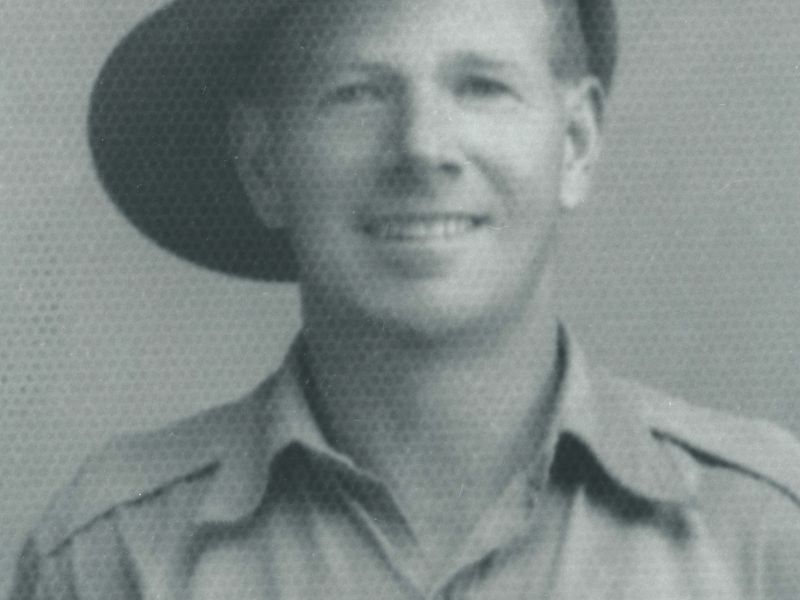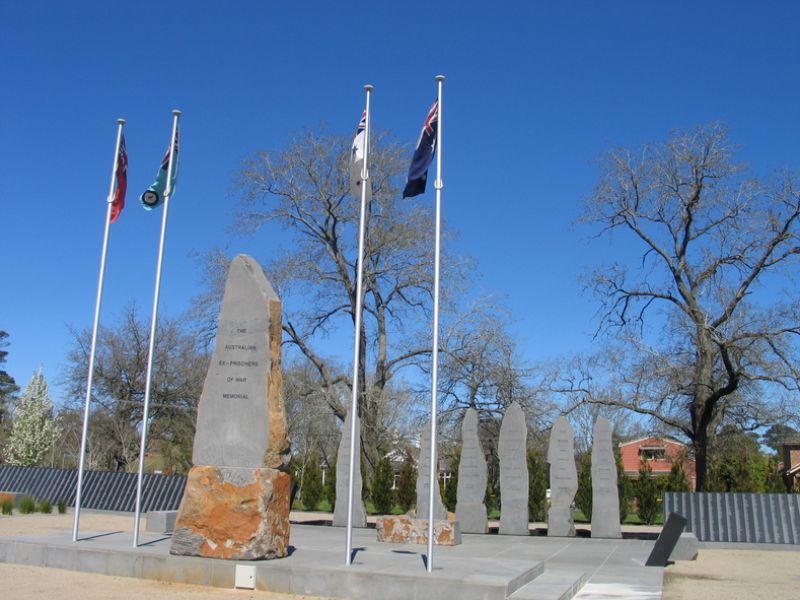Glen Ernest Murray
In the early hours of the 22nd of June, 1942, 1054 prisoners of war (209 civilians and 845 military personnel) were awakened at Malaguna Road Camp on the island of New Britain, and told to get ready to move. Taken captive when the Japanese had invaded the island, they were to be taken to Japan, to be used as slave labour. Conditions on the ship were beyond humane. Little food and water, and inadequate sanitary arrangements. The outward appearance of the Montevideo Maru was that of a standard Japanese transport. There were no special markings to indicate she was carrying prisoners of war.
At 0229 hours, on the morning of July the 1st, disaster struck. Two explosions were felt, both on the starboard side in holds No. 4 and No. 5. As the ship began to list to the starboard side and began going down from her stern, the Captain called to abandon ship. At 0240 hours she disappeared completely from the surface. Of the 1054 prisoners and 88 crew on board, only approximately 20 survived. The survivors were all Japanese.
The Montevideo Maru had been tracked by the US submarine USS Sturgeon, under the command of Lt. Cdr. William Wright, for over four hours. The Americans had no idea that they had just played a part in Australia’s worst maritime disaster. The Upper Murray losy five of their own that day. Glen Murray was one of them.
In April, 2023, Sydney based Silent Foundation, and the Dutch company Fugro, located the wreck of the Montevideo Maru at a depth of more than 4000 metres, off the coast of the Philippines. No longer will the 1054 prisoners have “no known grave” next to their names.
Glen was born on the 4th of April, 1902, in Rutherglen, Victoria. He was the second of five children for Ernest Cuthbert and Theresa (née Plunckett) Murray. Just after Glen was born the family moved to Walwa where Ernest worked his trade as a wheelwright and blacksmith. The 1925 Australian Electoral Roll shows that by this time, Glen had become a dairy farmer in the Walwa district.
Royal Park, near Melbourne, was the main recruitment centre for Victoria. On the 26th of July, 1940, Glen lined up with many others to enlist in the 2nd AIF. After passing his medical in Wangaratta he was sworn in as Private Ernest Glen Murray VX34563 of the 2/3rd Machine-gun Battalion.
After six weeks at Royal Park he was transferred to No. 3 Training Depot situated at the Bendigo racecourse. On the 10th of December Glen was admitted to the CDS (Camp Dressing Station) Bendigo suffering from an ulcer. It would be more than three weeks until he was fit enough to return to duty. In early February, 1941, Glen was transferred to the 6th Training Battalion at Darley, near Bacchus Marsh, in Victoria. He would remain here for three weeks, possibly catching up on any training he would have missed whilst being in hospital. On the 21st of February he was posted to the 2/22nd based at Bonegilla. Glen’s records indicate that he was once again admitted to hospital on the 10th of March. This time it was the 106 General Hospital at Bonegilla. Over the next two weeks Glen would be moved between hospitals at Bonegilla, Caulfield and Broadmeadows suffering from stomach complaints. It is not noted what treatment was administered, but he was sufficiently recovered to be returned the 2/22nd where, a week later, he embarked on the TSS Zealandia and headed for Rabaul, New Britain.
Four days after the Japanese surprise attacks across the Pacific, Glen was back in hospital, this time suffering from pharyngitis, or a severe sore throat. He remained in hospital for only three days before heading back to his unit.
Glen was a member of the Machine-gun Company of the 2/22nd Battalion. In the disposition of forces around Rabaul, his company would have been split amongst the infantry companies, with one section of vickers machine-guns being allotted to each company. Sifting through the records, and knowing that Glen was taken captive at Kokopo Plantation, we can see that Y Company, which was dug in at Raluana Point, is the closest to the plantation. Glenn’s position could therefore have been with the one section of machine-guns stationed with members of the Royal Australian Artillery Anti-tank Regiment and NGVR (New Guinea Volunteer Reserve) personnel at the Point. If this is the case then he would have had a ringside seat watching the invasion force anchor offshore. Raluana Point was one of the locations that the Japanese stormed ashore. The under equipped Australian and New Guinea reservists would not have stood a chance, and so they began their fighting withdrawal. Glenn was captured 10 kilometres south-east of Raluana Point at Kokopo Plantation. He was to become POW No. 409.
Glen is remembered on the Australian War Memorial Roll of Honour, the Walwa Roll of Honour, Ballarat Australian Ex-Prisoners of War Memorial, and the Labuan Memorial on the island of Labuan. For his service, he was awarded the 1939-1945 Star, the Pacific Star, the Defence Medal, the War Medal 1939-1945 and the Australian Service Medal 1939-1945.

 Stephen Learmonth
Stephen Learmonth